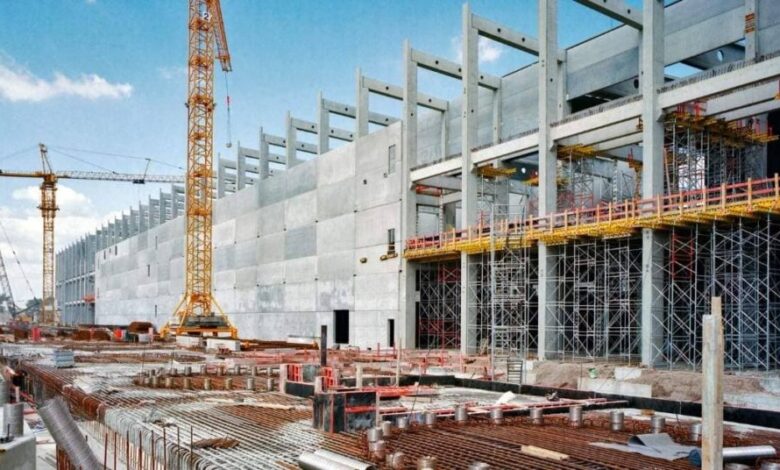8 Overlooked Areas Within Construction Sites that Lead to Delays

There is nothing new about delays on a construction site. There are rarely projects that don’t run into delays. It’s not always easy to pinpoint the reasons for these delays. Sometimes the cause is obvious, like equipment failure. But more often, it’s something seemingly minor, like a delivery truck being delayed because there was no proper access route. Minor issues often get overlooked, but when they stack up, they can derail an entire timeline.
Most project managers and contractors have safeguards in place in case something major goes wrong. That said, no one is looking at the minor problems or even trying to fix them, which is what could lead to trouble in the future. In this guide, we’re highlighting eight surprisingly minor and fixable site-level issues that are causing delays.
1. Delayed Welfare Unit Installation
It’s hard for crews to do their best work when basic facilities are missing. Toilets, break areas, and places to eat or warm up are usually installed after work has already begun. This hampers your team’s morale and productivity, and you also risk breaching legal welfare obligations.
Getting these essentials set up from day one makes a real difference. There are suppliers like Hireforce Welfare that supply welfare units promptly, but they can only do their part when welfare is treated as a priority and not as an afterthought.
2. Improper Site Lighting
Construction work doesn’t stick to daylight hours, especially in the winter. Poor lighting is a minor safety concern but a major productivity concern. Insufficient visibility raises the possibility of errors and delays tasks because teams may have to wait for daylight to finish some of them. A well-lit site helps prevent errors before they happen and keeps the momentum going even when the sun goes down.
3. Inefficient Access Routes
You could have the best team and the right equipment, but if a concrete pump or delivery lorry can’t get where it needs to go, everything stalls. Blocked or badly planned routes are a surprisingly recurring problem behind lost hours.
What could start as a 30-minute delay can ripple into wasted shifts across multiple teams. Keeping access routes mapped, signed, and regularly reviewed helps everything keep moving.
4. Last-Minute Design Changes Without Clear Communication
Changes happen. Clients tweak specifications, and engineers have to rework plans; that’s part of the process. But when updates don’t reach everyone in time, things can quickly spiral.
For example, your site managers, subcontractors, and crews may end up out of sync. Teams may show up for jobs that have been scrapped or install materials that no longer fit the updated design. To prevent expensive blunders, communication in real time is crucial on a construction site.
5. Over-reliance on a Single Subcontractor
When a subcontractor responsible for a critical task falls behind schedule, it can delay the entire project. Engaging multiple subcontractors is not a matter of mistrust but a strategic approach to risk management.
For longer or multi-phase projects, it’s worth having backup traders or overlapping options wherever possible.
6. Lack of On-Site Charging or Power Points
Construction sites across the UK are increasingly reliant on tech, from digital drawings on tablets to cordless power tools and temporary LED site lighting. However, without proper planning for charging stations, battery packs, or reliable site generators, productivity can grind to a halt.
This is why it’s important to have a clear site power strategy. Make sure your power usage strategy is aligned with how different teams use their tools. This will help avoid avoidable downtime caused by something as simple as a flat battery.
7. Undertrained or Overstretched Site Supervisors
An effective site supervisor identifies potential issues, resolves bottlenecks, and ensures clear alignment across teams. However, when supervisors are overburdened or lack experience, important details can slip through the cracks.
This often leads to slower progress and minor oversights escalating into costly delays. To avoid this, it’s essential to ensure your supervisors have the capacity, training, and support they need to stay on top of the job.
8. Waste and Debris Build-Up
In addition to being unsightly, a disorganized site slows down everything. Cluttered pathways make it harder for people and machines to move around safely and efficiently. Skips that aren’t emptied regularly force crews to shuffle material just to access their work area.
Merely removing clutter can also help save time every day by ensuring that there is room for everyone to move around.
Summing It Up
Delays in construction don’t always come with a flashing warning light. Mostly, they’re a mix of smaller issues, which add up. The good news is that these issues are easily fixable with the right planning, communication, and planning.
Construction is as much about people and processes as it is about materials and machines. The overlooked delays are often signals of wider communication gaps, planning oversights, or assumptions that everything will work itself out.
Whether you’re managing a single site or multiple ones, keeping track of these smaller site dynamics is what helps avoid these delays. Every delay that is avoided is one step closer to completing your project on time.




